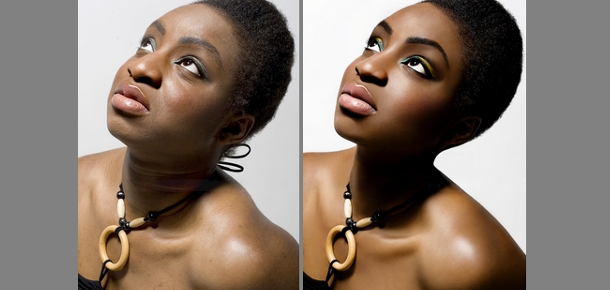There is a long and ugly history of society dictating to women what our bodies should look like. In ancient Greece, women were supposed to be lithe and muscular with small breasts. In the seventeenth and eighteenth centuries, fuller bodies were considered ideal, as captured by Rubens. Ads from the past century in America showed an aversion to skinny bodies – no matter how thin a girl, she should have hips and a sizable bust. These ideals were generated by a variety of factors – larger culture such as in the highly athletic Greece, famous women of the time, or as in the case of Rubens and Charles Gibson, widely viewed images.
Today, though, we find ourselves at a strange point for women and body images. With the advent of Photoshop, retouching photos has become so easy that there are unofficial competitions on YouTube to see who can most drastically alter a picture. Cindy Crawford famously noted that even she doesn’t look like Cindy Crawford in the morning, but it’s now at the point where models don’t even look like themselves as they were during the shoot.
[yframe url=’http://www.youtube.com/watch?v=hibyAJOSW8U&feature=player_embedded’]
Body image has become a loop in which we take our idealized notion of what people should look like, alter images to meet that notion, and then try to alter ourselves to meet the false standards of the images we see. Unlike previous societal standards, no amount of natural body altering can achieve the look in today’s media: no wrinkles or fine lines, no drooping skin, no cellulite, elongated necks, and child-like large eyes.
The Dove Campaign for Real Beauty has raised awareness of both the cherry picking of women we see in media and the alterations that occur to images. So now there’s an awareness that images are altered – but what do we do with it?
Enter Hany Farid, a professor of computer science at Dartmouth College. Dr. Farid works in image analysis and digital forensics, and he was intrigued by proposals in Europe to label images that had been altered. The flaw in that approach, to Farid’s way of thinking, was that a photo with basic retouching was not comparable to a photo where the image was essentially redrawn over the original. He and Eric Kee, who is pursuing a Ph.D. in computer science with Farid, developed software that could rate the amount of retouching done to an image. They propose that rather than slapping an altered label on images they should be rated by how much retouching was done.
Using hundreds of recruits, they showed people images both in the original and retouched forms. The images were rated by the volunteers for level of alteration from one to five, and an algorithm was born.
Following are images from Farid and Kee’s website, in order from one to five as rated by their software. I don’t want to add to the pile of people who slam on Kim Kardashian, but from the glimpses I’ve had of her on her show it’s readily obvious that her pictures are all Photoshopped. Look below, and you’ll see that the truly beautiful Miss Kardashian has had her cellulite removed, ribs, hip, thigh, arm, and chest trimmed, hair flattened, and her skin lightened.
Farid’s software could ultimately be used as regulation or internal guidelines. The American Medical Association discourages the use of Photoshop to create unrealistic images, but don’t expect advertisers and others to comply. Images will always need to be altered, and once the wand is in use, it’s hard to stop airbrushing. The real change has to come from consumers demanding realistic standards in images. An editor may request that images not be Photoshopped above a rating of two or a model may have to sign a waiver to be Photoshopped to a rating of four. As Leslie Jane Seymour, editor-in-chief of More, noted to The New York Times, women are now seeking out images that look more natural. We’ve come to recognize that many images are altered, and a real women just can’t relate to a fabricated image.




[…] month, Techcitement’s Daniela Weiss-Bronstein wrote a detailed article about the problem of excessive use of Photoshop in fashion advertising. Because people buy the […]